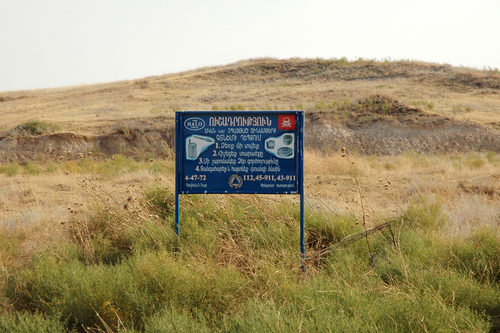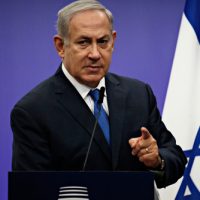Belgium (Brussels Morning Newspaper), In the bustling heart of Yerevan, the capital of Armenia, a truck sat obstinately across a main road last Friday morning, its presence a physical symbol of resistance. This was not just a traffic disruption but a deliberate act of protest against a deepening crisis that has gripped the nation. Across Armenia, a pattern of demonstrations has been emerging with increasing frequency. Whether blocking vital traffic routes or gathering en masse on the streets, the Armenian public is voicing its dismay and concern over recent political developments with Azerbaijan that many fear could lead to significant territorial losses.
The epicenter of this growing unrest is a recent agreement between Armenia and Azerbaijan, which the leaders of both nations have hailed as a historic resolution. This agreement was sealed last week when the border demarcation commissions of the two countries, led by their deputy prime ministers, convened at an undisclosed location along the border. The immediate outcome of this high-level meeting was Armenia’s decision to vacate certain settlements along a contentious section of the border—specifically between the northeastern Armenian province of Tavush and the western Azerbaijani district of Qazax.
The terms of the agreement stipulate that the border will be realigned to conform with the boundaries established between the former Soviet republics. This directive is grounded in the 1991 Alma-Ata Declaration, now known as the Almaty Declaration, which dictates these borders as the official demarcations between the newly independent states.
The significance of this decision is multifaceted. In early March, Azerbaijan demanded the “immediate liberation” of specific villages within this border zone. These villages, abandoned since the hostilities of the early 1990s, hold strategic importance due to their proximity to Georgia and a vital artery for trade and energy supplies. Not far from these villages runs a critical pipeline that facilitates the flow of Russian gas into Armenia—a lifeline for the country’s energy needs.
The Azerbaijani government, led by President Ilham Aliyev, celebrated this development as a “long-awaited historic event.” From their perspective, the return of these four settlements marks a significant step forward. However, the Armenian response, articulated by officials in Yerevan, downplays the scale of this concession, referring to the territories in question as merely “two and a half villages,” since Azerbaijan already controls some of the settlements involved.
This agreement, despite its presentation as a milestone in conflict resolution, is part of a broader, more complex narrative of the ongoing disputes between Armenia and Azerbaijan, particularly over the region known as Nagorno-Karabakh, or “Artsakh” by Armenians. This region was seized by Azerbaijan in a swift military operation in September 2023, following decades of being populated and administered by ethnic Armenians. The recent conflict has not only redrawn territorial lines but also significantly altered the demographic landscape, with over 100,000 Armenians displaced in the aftermath, many seeking refuge within Armenia itself.
The Armenian Prime Minister, Nikol Pashinyan, finds himself at a crucial juncture in his leadership. Having come to power on the wave of what was termed the “silk revolution,” Pashinyan now endeavors to steer his nation through these turbulent times towards a more stable and peaceful future. His government’s decision to negotiate directly with Azerbaijan and resolve issues through dialogue rather than conflict marks a pivotal shift in strategy. This approach is part of Pashinyan’s broader vision to align Armenia more closely with the European Union and reduce its historical reliance on Russian support.
Pashinyan praised the negotiation process as a groundbreaking achievement, emphasizing that for the first time, Armenia and Azerbaijan had managed to settle a dispute at the negotiating table without resorting to armed conflict. This development, he argued, was not just about territorial adjustments but about moving towards lasting peace and stability for the region.
The decision to withdraw from the disputed ruins in the province of Tavush is just the initial step in a series of planned negotiations between Armenia and Azerbaijan. By July, both nations aim to finalize draft agreements for “joint activities” involving their border commissions. This groundwork lays the foundation for a comprehensive treaty that will clarify and confirm the remaining sections of their shared border, including the delicate matter of four enclaves and exclaves.
The recent announcement that 20 new border posts have already been established following joint measurements came on a Thursday, signalling an ongoing commitment to transparency and cooperation. Yet, as these diplomatic strides are made, the streets of Armenia tell a different story. The echoes of past protests that brought Nikol Pashinyan to power six years ago during the “silk revolution” seem to resonate once more. The current wave of demonstrations, however, paints Pashinyan not as a revolutionary leader but potentially as a “traitor” in the eyes of some of his fiercest critics.
These sentiments are partly fueled by the outcome of the 2020 conflict with Azerbaijan, which resulted in significant territorial losses for Armenia. Pashinyan’s perceived failure to defend “Artsakh” effectively in the latest confrontations has only intensified public outcry against him. Despite surviving these waves of discontent, largely due to a fragmented and discredited opposition, Pashinyan’s position remains precarious. Most Armenians recognize the stark military imbalance between their nation and an oil-rich Azerbaijan, which not only enjoys substantial revenue from its natural resources but also retains the political support of significant Western allies.
In mid-March, in an effort to assuage public concern and prepare his constituents for the impending territorial concessions, Pashinyan toured the province of Tavush. He met with residents from the affected settlements, ensuring that their logistical concerns, such as road connectivity, were considered in the negotiations. His rhetoric emphasized the avoidance of future conflict as a primary objective, appealing to the populace’s desire for peace over continued strife.
However, his return to Tavush in mid-April, just before finalizing the agreement, was marked by secrecy: no public meetings or allowance for filming or photography. This opacity has provided ample fodder for his detractors, who argue that Pashinyan is perhaps too accommodating to Azerbaijani demands, a stance they deem unilateral and detrimental to Armenian sovereignty.
The broader geopolitical canvas illustrates a continuing tug-of-war over land and legacy. According to Yerevan, Azerbaijan still occupies 208 square kilometers of Armenian territory, a holdover from the conflicts of 2022 and 2023. Despite Azerbaijani affirmations of Armenia’s sovereignty and territorial integrity under the Alma-Ata Declaration, President Aliyev has occasionally voiced more expansive territorial claims. He points to historical grievances about “land gifts” made during the Soviet era, suggesting that these concessions only ceased when his father, Heydar Aliyev, assumed leadership in Baku in 1969.
These complex layers of history, national identity, and political maneuvering continue to shape the Armenian-Azerbaijani relations. As each side navigates the delicate balance between compromise and nationalism, the path forward remains fraught with challenges. For Armenians like those in Tavush and beyond, the unfolding scenario is more than a matter of international diplomacy; it is about the future of their homeland, their rights, and their place in an increasingly complex regional puzzle.
Dear reader,
Opinions expressed in the op-ed section are solely those of the individual author and do not represent the official stance of our newspaper. We believe in providing a platform for a wide range of voices and perspectives, even those that may challenge or differ from our own. As always, we remain committed to providing our readers with high-quality, fair, and balanced journalism. Thank you for your continued support.Sincerely, The Brussels Morning Team



